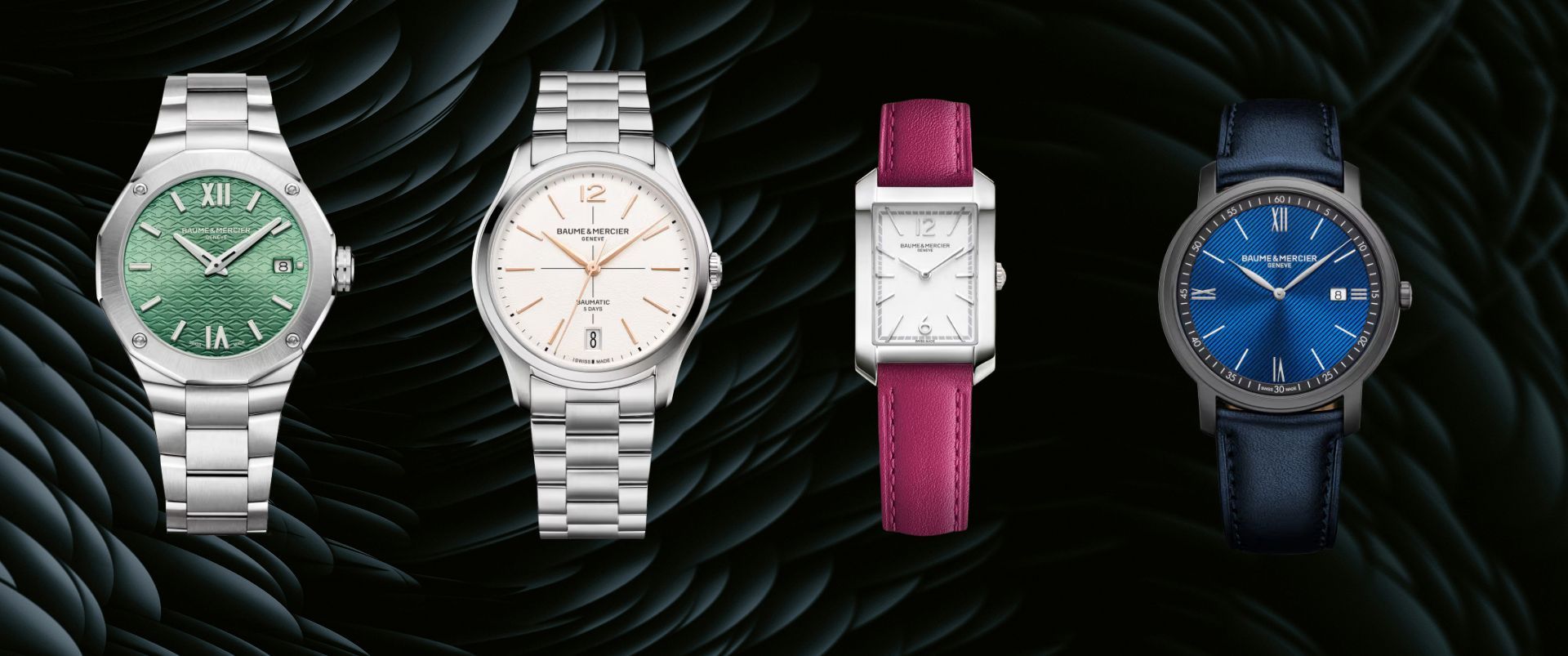Patek Philippe Off-Beat Timepieces: The Very Rare Of Geneva’s Finest - PART 1
Patek Philippe, as a Manufacture, holds a prestige which at times surpasses mere appreciation, it becomes obsessively religious and emanates a prophetic charm. As a For me, a passionate learner of timepieces, the aura and reputation are very well deserved and why not. Even in the current crowded market with more brands, more technology, more collectors and more capital than ever, Patek Philippe maintains its status at the top of the industry. Operating faithfully within the strict codes of Genevan watchmaking, Patek Philippe follows a refined aesthetic and an unrelenting dedication to mechanical excellence.
For a brand considered to be the only true synonym of fine watchmaking, one can find loads of literary substance documenting its creations, right from the days of its origin in 1839. While these “Extracts from the Archives” document the expansive evolution of Patek Philippe, I won’t consider it the ideal route to burn 500 Swiss francs (that’s 50,000 in terms of INR) to draw information about a Patek Philippe timepiece. I however, would pay the right bucks to experience in hand, what I consider are, blue moon watches from the Maison, the Genevan Manufacture’s true rarities. These are Patek Philippe timepieces off the beaten path and with prestige well above the hype-contaminated Nautiluses and Aquanauts.
These very special pieces are true rarities and by rare, I mean occurrence probabilities of almost nil in the 62,000 or so watches that Patek Philippe produces per year. This number in itself is an indicator of a modern-era Patek Philippe standard which is vastly different to the Manufacture’s past era preferences. For me, the golden period of traditional horology at Patek Philippe concluded in 1984, when Valjoux stopped to manufacture movements for them. The mid-80’s introduction of CAD/CAM established a degree of mass production which in every essence goes against classical watchmaking tradition. A major percentage of Patek Philippe’s current production is industrialized, although implemented on a high level, yet dominated by machine-executed work. This leap towards higher production numbers should not offend anyone, but it’s obvious that volume comes at an artisanal cost. For example, throughout the ref. 1518’s production span of 13 years, from 1941 to 1954, only a total of 281 units were manufactured. Beat that!
Why do the annual production numbers find a mention here? It’s actually the reason why true Patek Philippe rarity surfaces from an early era, where the relevancy of low quantity production together with higher artisanal execution, gave birth to very rare examples. These are Patek Philippe creations that make your Only Watch one-offs seem “basic.”
Uncommon Patek Philippe references are one thing. There’s however an example that’s not even known to many. A very short lived and limited to only three pieces, the ref. 3449 of 1961 could be referred to as an experimental watch, proving to be a testbed for the then upcoming ref. 3448 and the ref. 3450. The ref. 3449 is Patek Philippe’s rarest perpetual calendar wristwatch ever. All the three examples produced of the ref. 3449 vary in their case aesthetic. The first of the three had a triple-stepped bezel with angular lugs, the second featured a double-stepped bezel construction with angular lugs and the third one had a triple-stepped bezel with long lugs, and it's probably the most unique execution of the three. Each of the three examples has appeared at auctions in the past decades and comfortably fetched values higher of $1m.
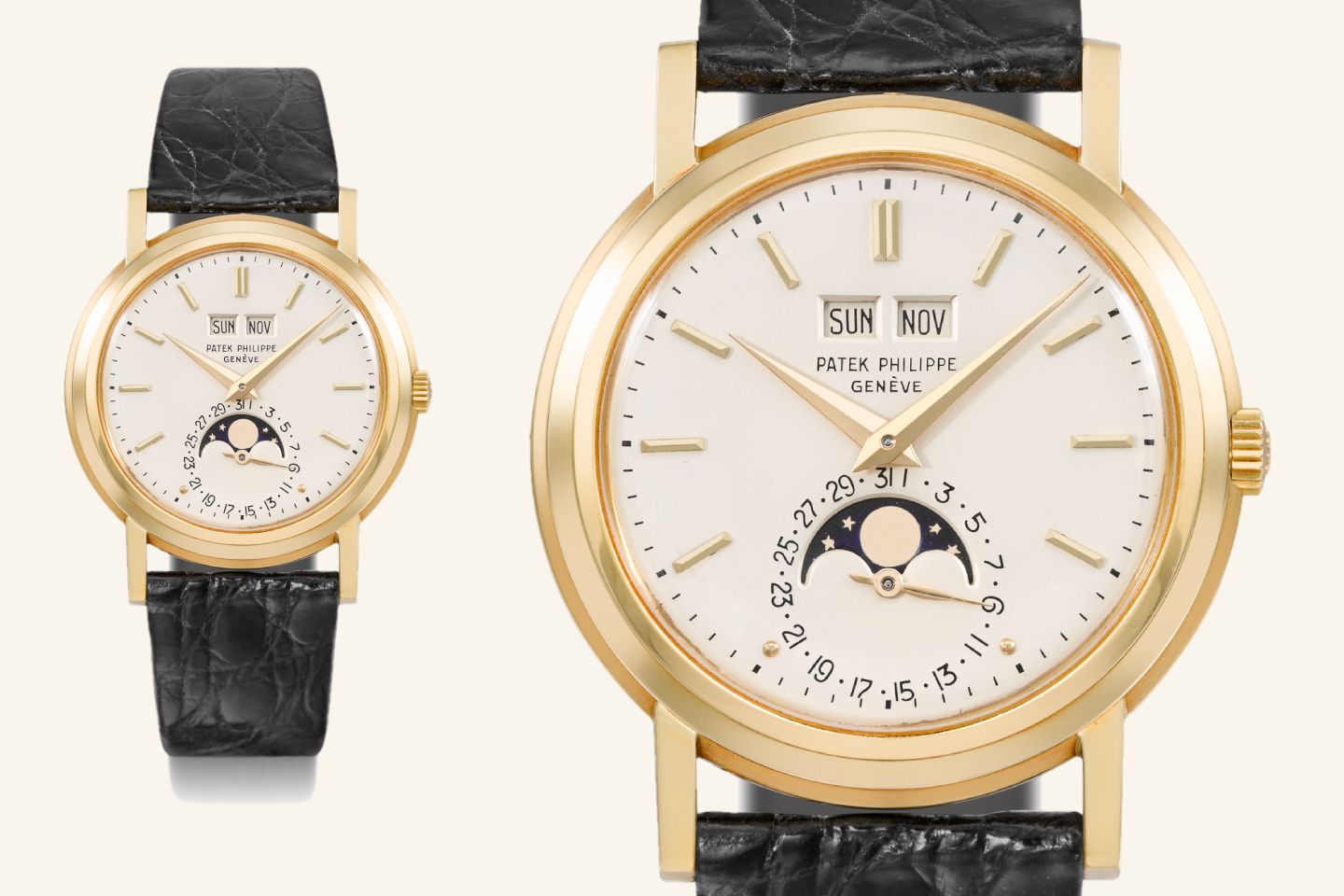
Beyond the rarity of the ref. 3499, it stands as a peculiar execution in the exhaustive portfolio of Patek Philippe’s perpetual calendar watches. Its 37mm case with its unusual design remained exclusive to this reference and as opposed to the follow-up ref. 3448, the ref. 3449 was powered by the manual wound cal. 23-300Q. The serial numbers inscribed on the movements of the three examples read as 799000, 799001 and 799002. The second of the series (serial no. 799001), was acquired by the Patek Philippe Museum at a 1989 auction. The first in the series (serial no. 799000), is in an important private collection since 2011 and the rarest of the lot (serial no. 799002), was acquired in 2014 at a Christie’s auction by none other than Mr. Auro Montanari, aka “John Goldberger.” This special piece finds a fitting residence with probably the most knowledgeable watch collector. The timepiece also gets a special inscription on its caseback on request of its original owner, George E. Poston.

Very few Patek Philippe timepieces are unknown to the market or any watch literature. Up until 1996, the existence of a very rare timepiece, the ref. 1591 wasn’t known to anyone. When it mysteriously surfaced at auction that year and the extract read “a water-resistant perpetual calendar from 1940s,” many linked it to a typo in the description. In reality, it was anything but! This highly audacious timepiece from 1944 holds a collectability acclaim with a biblical reverence. With only two examples ever made, one in stainless steel and the other in yellow-gold, it surpassed the then world-record for the most expensive stainless-steel wristwatch ever sold at an auction.
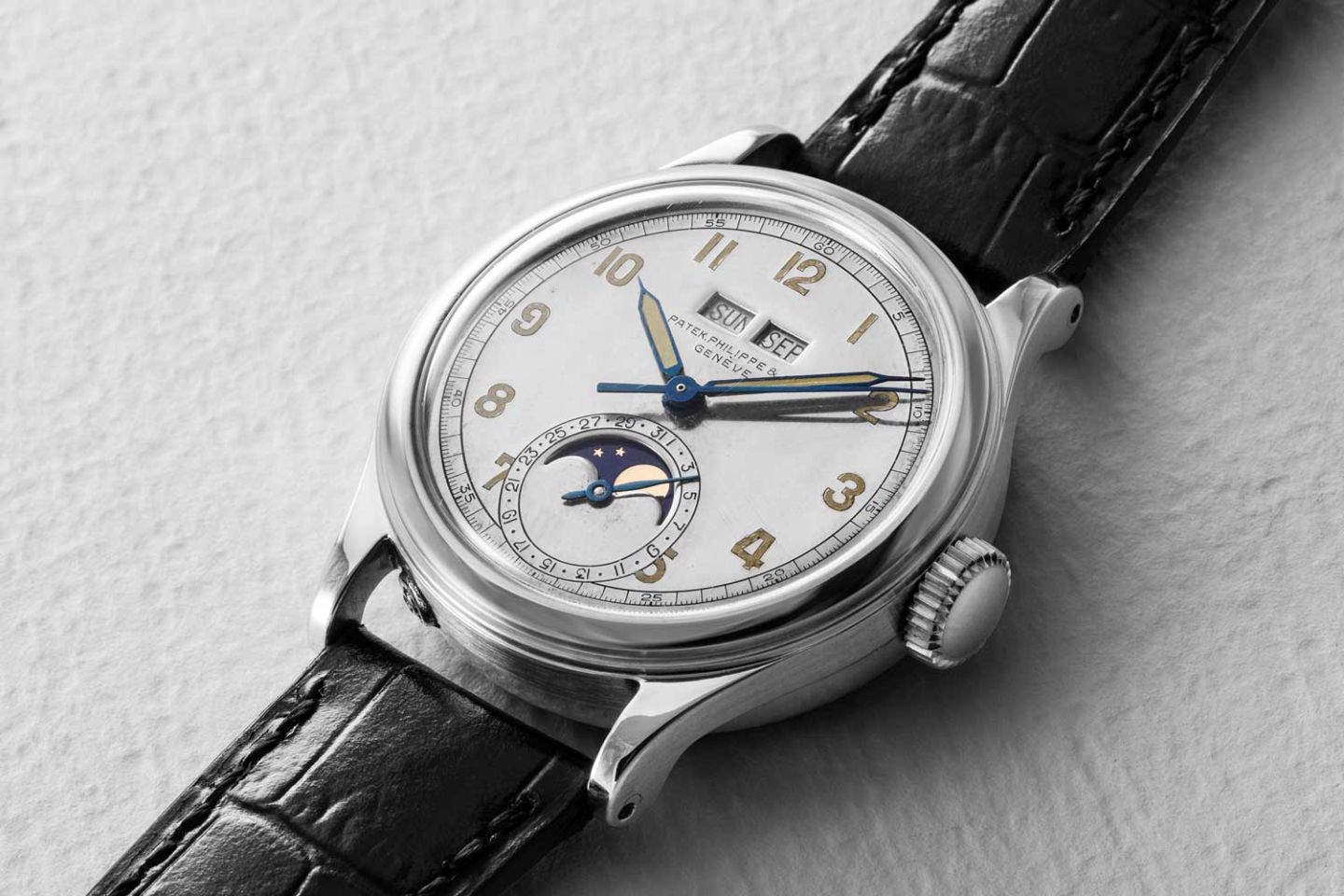
The ref. 1591’s tradition links it to an Indian Maharaja, who particularly wore it while playing Polo. The timepiece was retailed by Patek Philippe’s distributor for India at the time, Favre-Leuba. As the timepiece is now listed in the pages cataloging the collections at Patek Philippe Museum, it isn’t hard to guess that none other than Patek Philippe acquired this trophy watch when it surfaced at a Christie’s auction in 2007. The yellow gold model belonged to the infamous Marshall Tito of Yugoslavia. The ref. 1591 is the first waterproof perpetual calendar timepiece. It featured a screw back type case for water resistance and a soft iron cap over its cal. 12'''120 SC Q to shield it against magnetism. The caliber was based on a Victorin Piguet ebauche.
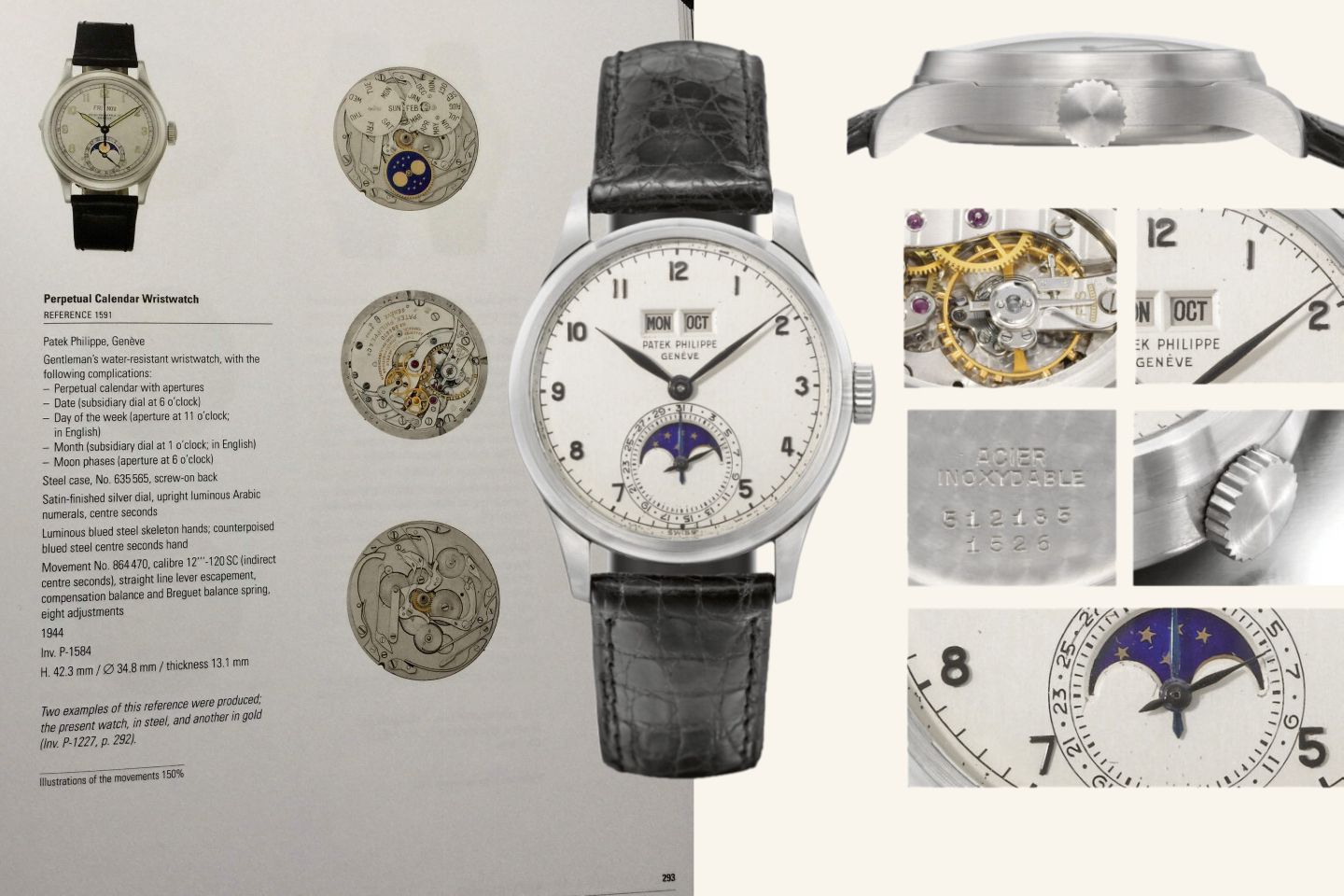
If you’re reading about the ref. 1591 for the first time, don’t fret, for you are not alone. Both iterations of this milestone timepiece in the history of Patek Philippe complicated wrist watches are now owned by the Manufacture and proudly displayed in perpetuity at the museum. Case shut, the ref. 1591 is the absolute endgame in collecting Patek Philippe.
For seasoned collectors who started the “hobby” even before terms such as the Quartz Crisis existed, it isn’t an everyday occurrence that a timepiece sweeps them off their feet. When they are, it's usually a rare, very rare, steel Patek Philippe complicated timepiece that’s the culprit. It is a reserved allocation for high aftermarket values and record-breaking auction prices. Despite being in its 185th year of operation, steel has been a reticent trend for the Genevan Manufacture. So, when writing about rate Patek Philippes, a mention of a simple-metal complication is a natural call.
The Patek Philippe ref. 1518 was the inceptive regular-production perpetual calendar chronograph introduced in 1941. This is the reference from which emanates every other perpetual calendar chronograph from the Manufacture. Only 281 of the ref. 1518s were made over a 13 year production run and of these 281, only four were ever made in steel. I’m not astounded by the fact that one of these four ref. 1518s in steel sold at a Phillips auction in 2016 for $11m. It stands fourth in the list of most expensive watches ever sold at auction.

The steel ref. 1518 from Patek Philippe is the holiest of all grails. It’s a 35mm timepiece powered by a heavily modified ebauche from Valjoux. The first-ever made-in-series perpetual calendar chronograph - ref. 1518, together with the ref. 2499, which also used the same caliber 13-130Q, remained the only watches with the perpetual calendar chronograph complication for nearly half a century, and that’s a fact often lost on people. The ref. 1518 in stainless-steel is an absolute outperformer in the definitive disciplines of collectible timepieces. Its rarity, size, complications, condition and provenance, all make it the perfect storm in terms of desirable vintage watches.
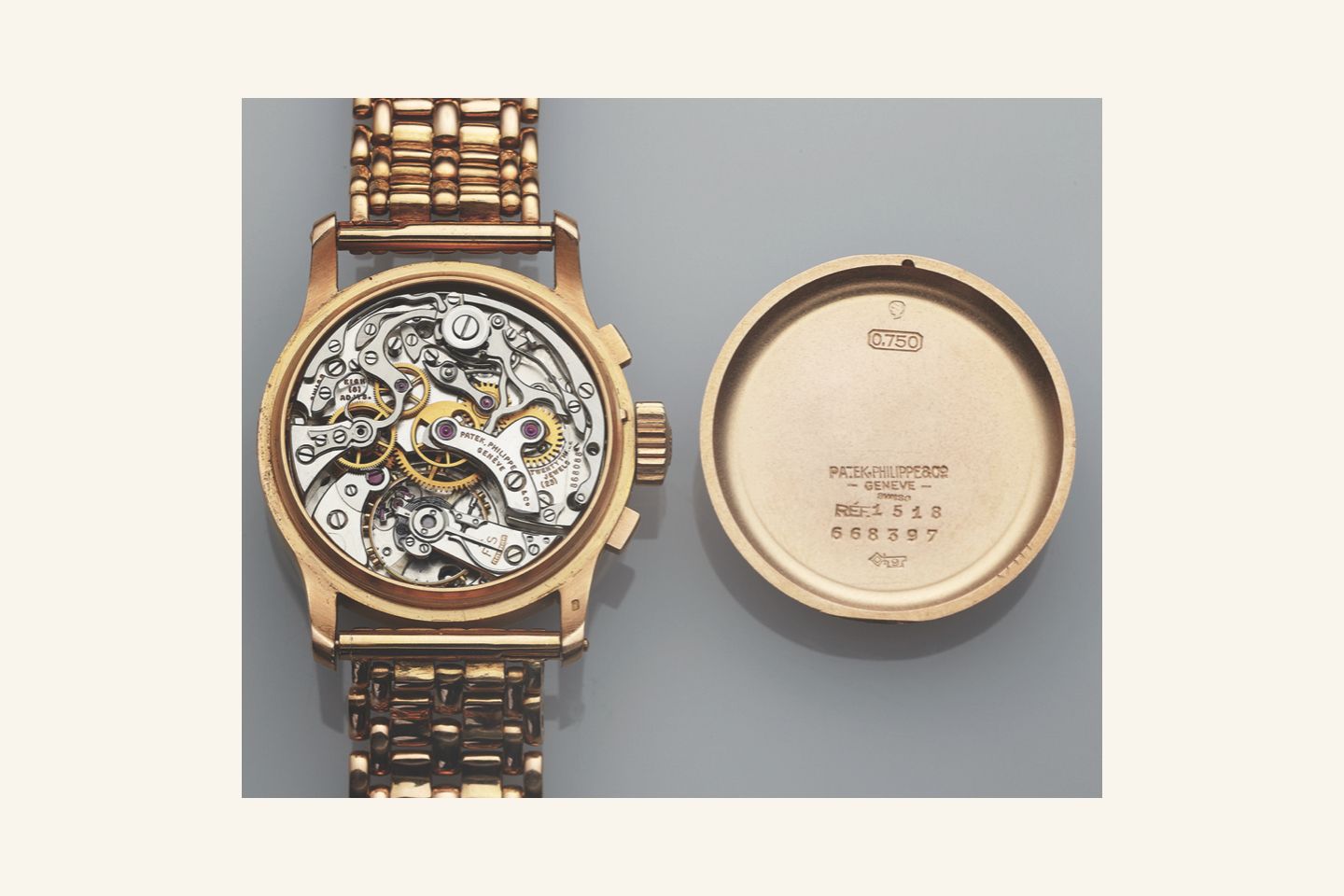
While the world was at war, Patek Philippe sought to create this masterpiece reference. The ref. 1518's iconic design, featuring twin apertures at 12 o’clock, chronograph registers at 3 and 9, a circular date display and a moonphase at 6 o’clock, would serve as a blueprint for Patek Philippe's most significant timepieces for the next eight decades and counting. Given its extraordinary importance, it is unsurprising that the fabled scholar and collector John Goldberger has devoted four pages to it in his work, “Patek Philippe Steel Watches.” All ref. 1518s are rare, but steel 1518s? Well, I don’t even have a word to describe. The closest I can try is, “not even available in the Patek Philippe Museum” rare.
There are a strange few who attest lack of design creativity and aesthetic exploration as a weak point for Patek Philippe. For these surface-level observers, it’s a pertinent concern but for me, their general lack of interest in the brand. Still, I would please them with a mention of a few pieces that not only broke the mold for Patek Philippe’s reserved classic aesthetic, but offered truly one-of-a-kind creations that remain unique till date. These are rare designs emanating from the Genevan Manufacture and produced in rare numbers.
A very fine sculptural Patek Philippe, the ref. 913 was introduced in 1981 and produced for only a handful of years in the early half of the decade as an exceptional objet d’art. Its launch coincided with the classic era of the legendary Ellipse and offered a fine artisanal execution of a very dear Patek Philippe aesthetic of mine. It was an Ellipse made as a “letter opener” and offered in a variety of different styles. Only available in yellow gold, its dials featured myriad styles of hand engraving configurations and the elliptical case was ornately blended with the functional stem serving a very refined utility.

With less than 10 known examples, each execution of the ref. 913, powered by a Quartz caliber E27, was a unique piece. This piece with functional duality, a timepiece and a letter opener, is an artisanal horological opus you don’t get to see every day. Each execution of the piece exhibits the art of the gem setter, the art of engraver and the art of the watchmaker. I’m with the group standing for the fact that the Ellipse, not the Calatrava, is the purest Patek Philippe dress watch aesthetic. That’s why the Ellipse case lends itself so well to having artisanal aspects. The case is so simple, yet it’s not round. As demonstrated by the ref. 913, the Ellipse is an ideal platform for Patek Philippe to test sculptural objets d’art and give a taste of its more is more philosophy.
If a Patek Philippe letter opener timepiece doesn’t startle you, well this surely will do. You might be aware of the situation of “Grand Commissioners” of Patek Philippe. It’s an early 20th century tale involving James Ward Packard and Henry Graves Jr. Horological passions took a contesting affair when these two ordered commissioned pieces and raced to own the grandest of all grand complications. Well, this tale too has inconsistencies but makes for an interesting addition to any Patek Philippe related article. Well don’t judge me, I’m just writing what’s already written. Please refer to A Grand Complication - The Race to Build the World’s Most Legendary Watch, by Stacy Perman.
This extraordinary affair of Patek Philippe commissioned pieces involved development of super-complications and super-artisanal examples. One piece commissioned by James Ward Packawrd was a Patek Philippe timepiece embedded in an exquisitely ornate knob of a walking stick. This cane watch was a unique piece commissioned by Mr. Packard and was made of an ebony stick with a silver twist-off clock at the top and a protective cover made of ivory. This horological accessory was reincarnated into modern literature by Stacy Perman who chased down every living descendant of James Ward Packard, from one of whom she discovered this piece unique. The walking stick timepiece has a manual wind movement, interestingly wound by twisting of the stick knob, bearing James Ward Packard’s name. This is a piece I would love to own, although a Patek Philippe walking stick is probably the last thing I need. But who knows, maybe in a few years I might.

A whole series of very avant-garde Patek Philippe creations emerged in the 1950’s as artisanal realizations of designer Gilbert Albert’s manifestations. Hired by Patek Philippe in 1955, when he was in a tender age of 25, Mr. Albert was a visionary and a definitive entity in the Manufacture’s mid-century design influence, wherein he introduced the “Ricochet” collection featuring organically inspired designs. References like the ref. 788 and its subsequent iterations with shaped-case aesthetics weren’t hot sellers at the time, but as not many were made, are incredibly desirable today. They were produced in the years between 1961 and 1968.
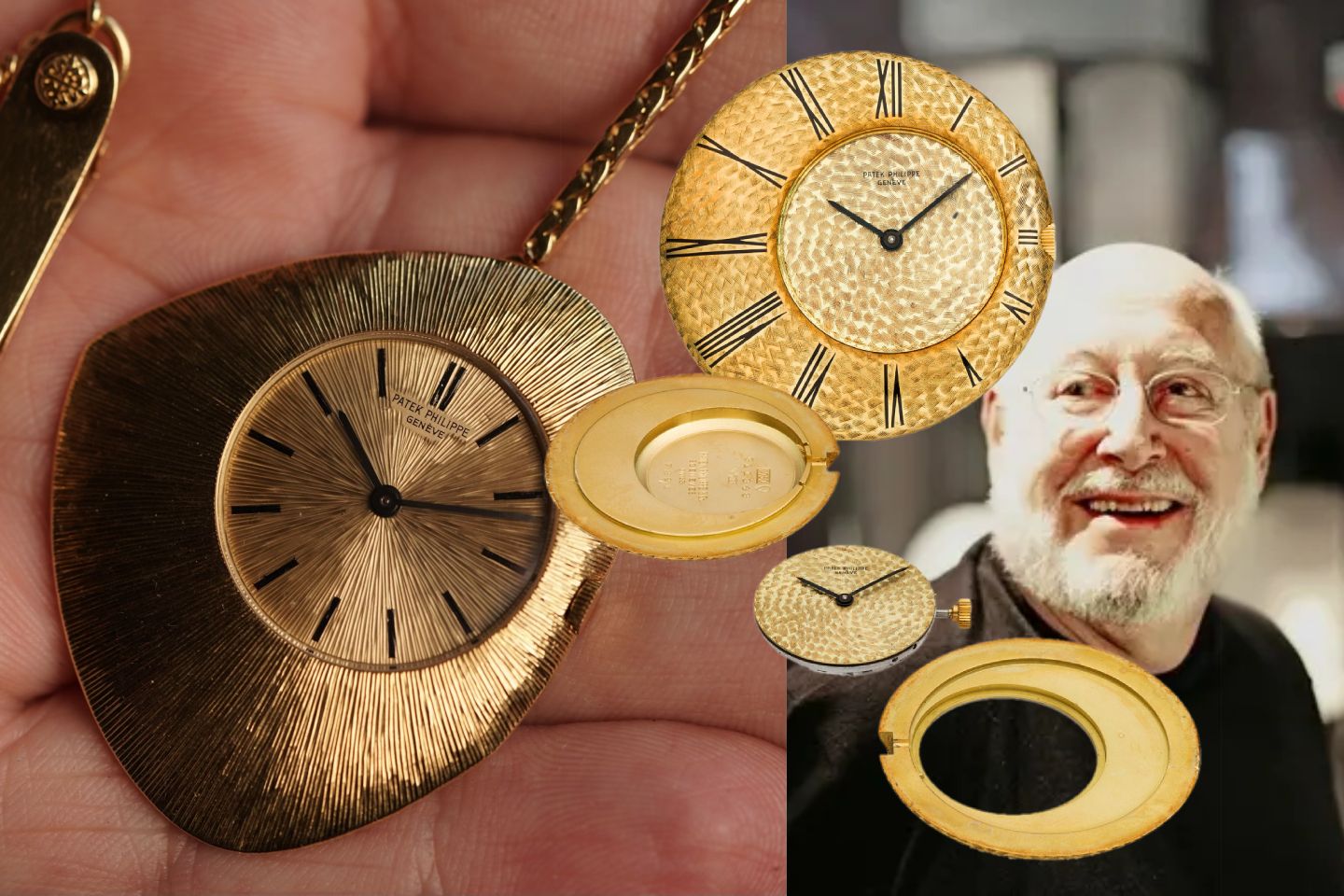
While the Ricochet collection might be emblematic of Gilbert Albert’s Patek Philippe designs, one of the most unique timepieces he created for the Manufacture was the ref. 3414 called “Cobra.” This is a true linear display retro-futuristic timepiece almost forgotten and very rarely known. Replacing the rotary pattern with a linear execution for information display is a mid-20th century “futuristic” design and an innately automotive innovation. The modern-era Urwerk and HYT examples have vividly experimented with the concept of linear display time-telling, but the horological OG-tag of the configuration is credited to none other than designer Gilbert Albert and watchmaker Louis Cottier. The Patek Philippe Cobra ref. 3414 is a 1958 creation with a side-view linear display. Its cal. 9-90 developed by Louis Cottier features a cylinder-drive mechanism and the only example produced of the ref. 3414 has been a Patek Philippe Museum exclusivity. Will it ever get into serial production after nearly seven decades since the patent for it was filed, who knows?
No articles found



